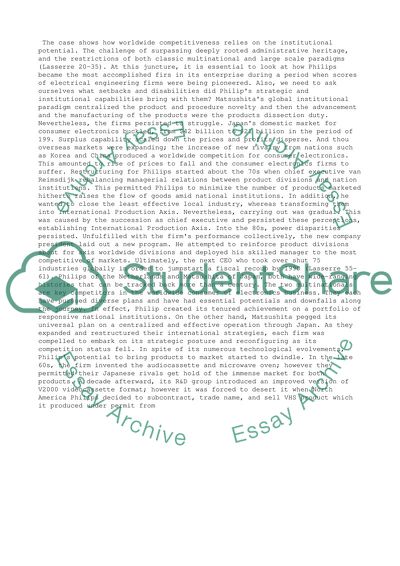Cite this document
(“Case Philips versus Matushita: The Competitive Battle Continues Essay”, n.d.)
Case Philips versus Matushita: The Competitive Battle Continues Essay. Retrieved from https://studentshare.org/management/1463598-case-ypphilips-versus-matushita-the-competitive
Case Philips versus Matushita: The Competitive Battle Continues Essay. Retrieved from https://studentshare.org/management/1463598-case-ypphilips-versus-matushita-the-competitive
(Case Philips Versus Matushita: The Competitive Battle Continues Essay)
Case Philips Versus Matushita: The Competitive Battle Continues Essay. https://studentshare.org/management/1463598-case-ypphilips-versus-matushita-the-competitive.
Case Philips Versus Matushita: The Competitive Battle Continues Essay. https://studentshare.org/management/1463598-case-ypphilips-versus-matushita-the-competitive.
“Case Philips Versus Matushita: The Competitive Battle Continues Essay”, n.d. https://studentshare.org/management/1463598-case-ypphilips-versus-matushita-the-competitive.


